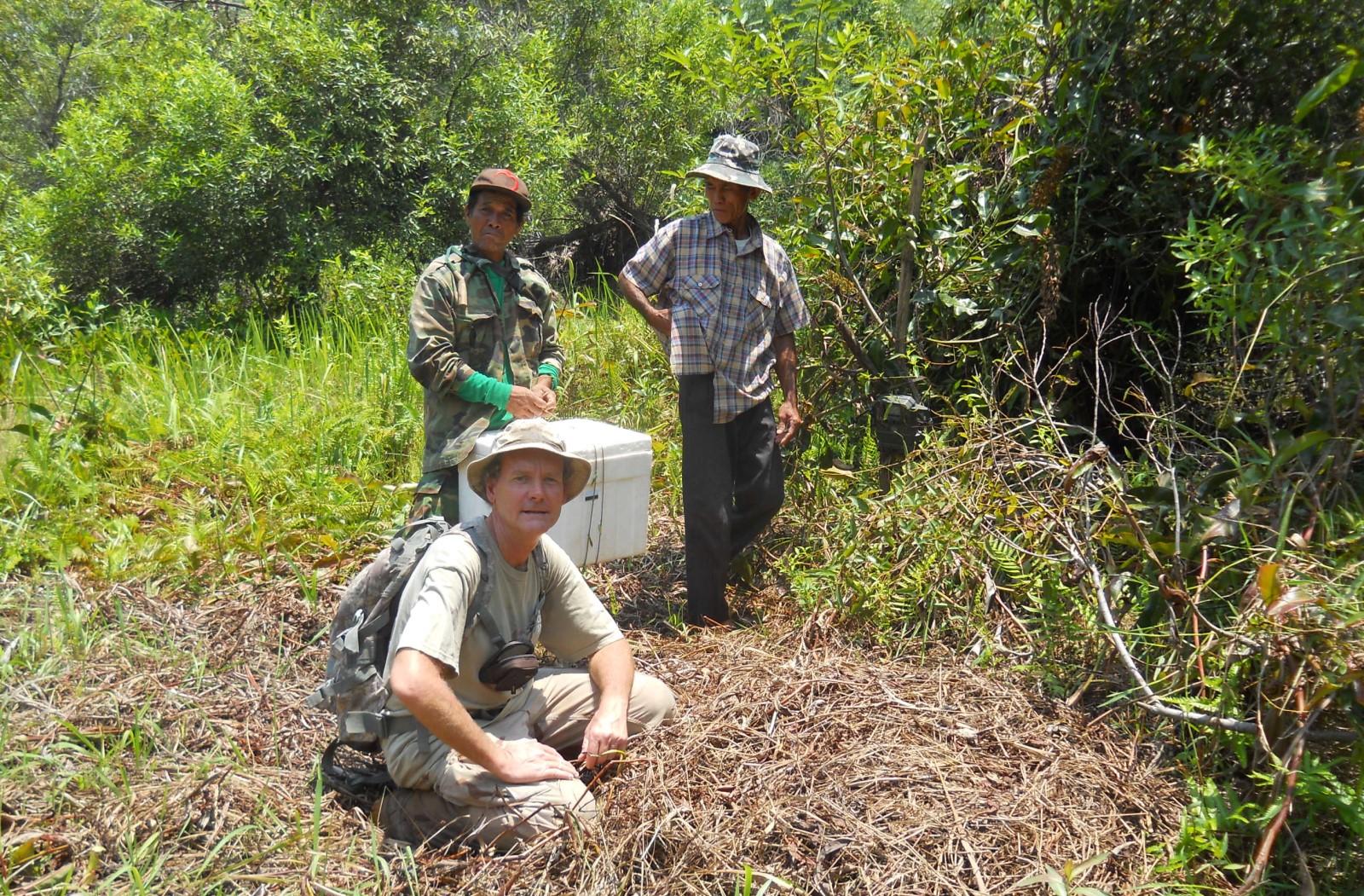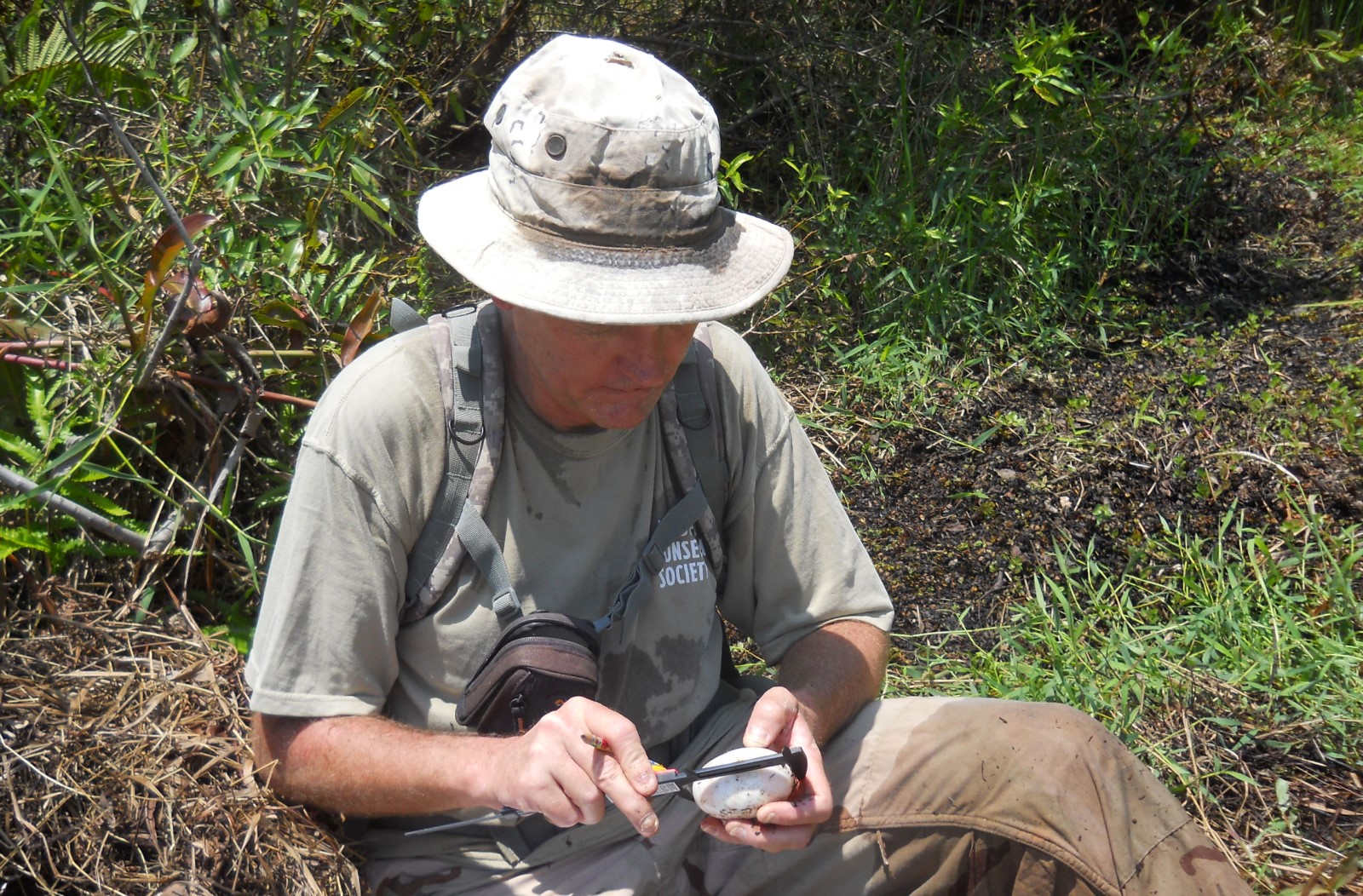Talking crocs and emergency funding with Steve Platt
We spoke with Dr Steven G. Platt, Associate Conservation Herpetologist at Wildlife Conservation Society (WCS)-Myanmar Program, and a member of the IUCN Crocodile Specialist Group. We discussed whether crocodiles get fair representation in conservation, and how emergency funding can be a life saver for projects.
Do you think reptiles get a fair representation in conservation in Southeast Asia?
There is recognition that turtles and crocodiles are in trouble, but I would say crocodiles are harder to fund than turtles are. Turtles are lovable and non-threatening, whereas crocodiles sometimes have a bad public image. We’ve had good success getting funding for turtles, and it doesn’t take huge amounts of money. Once you have any facilities covered, ongoing maintenance costs are fairly low.
Getting funding for crocodiles, though, is like getting blood out of a turnip, which always mystified me as they’re [crocodiles] charismatic megafauna. WCS is going through a new strategic plan, and crocodiles are a big part of that and what we’ll be pitching to donors. We’ve had some success with the zoo communities because they have Siamese Crocodiles, so they will donate towards the species.
ASAP recently launched a Rapid Action Fund – small amounts of funds to address urgent conservation needs of ASAP species and their habitats. In your experience, does this type of rapid funding help to fill a gap?
We were running a Siamese Crocodile project in the Savannakhet Province, Lao PDR and had five years of funding secured. The project was running behind schedule due to several factors that were out of our control. By the fourth year we were headstarting the crocodiles and were having good success, when the donor pulled out unexpectedly (I should note that the withdrawal of funding was due to cost cutting by the funder, and not related to performance).

Luckily, CEPF helped us with emergency funding to continue headstarting the crocodiles and get them out in to the wild. That allowed us to get the crocodiles up to maturity before releasing. Otherwise, we would have had to release them young, which defeats the whole purpose of headstarting. That emergency funding got us to a point where we could responsibly close-up shop and walk away for a while, until we found new funding which took several years.
The zoo community (in particular the North American Zoo community, and Wildlife Reserves Singapore) has been helpful, they’re really interested in what we’re doing. Now, the project is going well again. Within a matter of weeks of starting back up we were out collecting crocodile eggs and seeing crocodiles from earlier releases that had become established. There was a four or five day period last year where we found three nests of fertile eggs, which I’d never seen before. The community are trained in doing the surveys, so they now measure the eggs, can handle them and set up the incubators.
Are there any groups of natural history that you are particularly interested in other than reptiles? If yes, why did you choose to focus your work on reptiles?
I’m interested in a lot of stuff, but I only get paid to work on turtles and crocs! It all started as a little kid and my Masters project was on alligators in Louisiana. I’d done an internship with crocodiles in the northern territories of Australia. In Belize I worked on the Morelet’s crocodile for my PhD and on the American crocodile for WCS, so I had a pretty good CV. I really like bears and I tried to get involved in a bear project, but I only had experience with alligators. So I sold myself as a crocodilian biologist and got snapped up right away. It was only later that I segued into turtles which was possible as a herpetologist.
It was a small community when I started, still led by the old guard that pioneered alligator and crocodile research. In the US they were in Louisiana, South Carolina and Florida, in Australia there was the one guy I did my internship with. There was also some South Americans doing work with caimans, and some South Africans. That was about it.
Now when you go to the IUCN SSC Crocodile Specialist Group meetings there are a lot more people working on crocodiles than previously, and there are more papers coming out.
The Crocodile Specialist Group has recently produced a revised Action Plan for the Siamese Crocodile. How can the value of an Action Plan be maximised?
That’s a good question. We have several recommendations in there for the species in Lao PDR, Cambodia and Thailand. There’s already interest in the species in Thailand, and because of their National Parks system, once they are involved there is great potential for Siamese Crocodiles.
There’s almost nothing known about the Siamese Crocodile in the wild, and it’s one of the most threatened species. The action plan sums up all the scientific literature so it’s useful as a scientific document. But we can also take it to donors to show what needs to be done, and what projects are a priority. We hope that this legitimises our claims for the projects and gives us credibility.

If there’s one take home message I’ve learned in the last ten years, it’s that you’ve got to have boots on the ground. You can’t do these projects in four or five years and then walk away, because there would be no one to carry on. Often there isn’t an institution to hand the work on to for management and funding responsibilities. So once we take on something, we’re in for the long haul, maybe 30, 40 or 50 years.
During your time being active in Southeast Asia, do you feel the conservation outlook for reptiles in Southeast Asia has changed, and how?
Yes. There has been some successes in some areas, and some setbacks in others. I think there is a lot more awareness among policymakers that reptile conservation is important.
The threats have also changed. Particularly for turtles. Where they used to be traded into the food market, now, it is the high-end international pet trade. We’re still seeing turtles going out of the wild, but for different reasons. There are so many crocodiles in captivity, there isn’t so much need for them to be poached from the wild. Skins also aren’t worth as much as they were. But there is still a problem with wild caught animals being laundered into farms.

In Lao PDR, several local communities have been enthusiastic about the crocodile conservation work. There’s an interesting story behind the involvement of these communities. Many of the local people believe the crocodiles are the embodiment of dead ancestors and regard the animals with great respect. Despite the area being an agricultural landscape, these beliefs have afforded the crocodiles protection. I attribute the survival of Siamese crocodiles in this area to these beliefs. There is an article in the Crocodile Specialist Group newsletter from 2018 about this (from page 6).
When we came back after the break, the local people were keen to be involved again. That was really encouraging, especially as we’d been gone for several years. A lot of that is down to our guy in Savannakhet, who is a brilliant local guy, and a real people person.
Is there anything else you’d like to share across the ASAP Partnership?
We need more reptile conservationists! It doesn’t take much money and is certainly worthwhile to do. So my message is just to get out in the field doing work.

